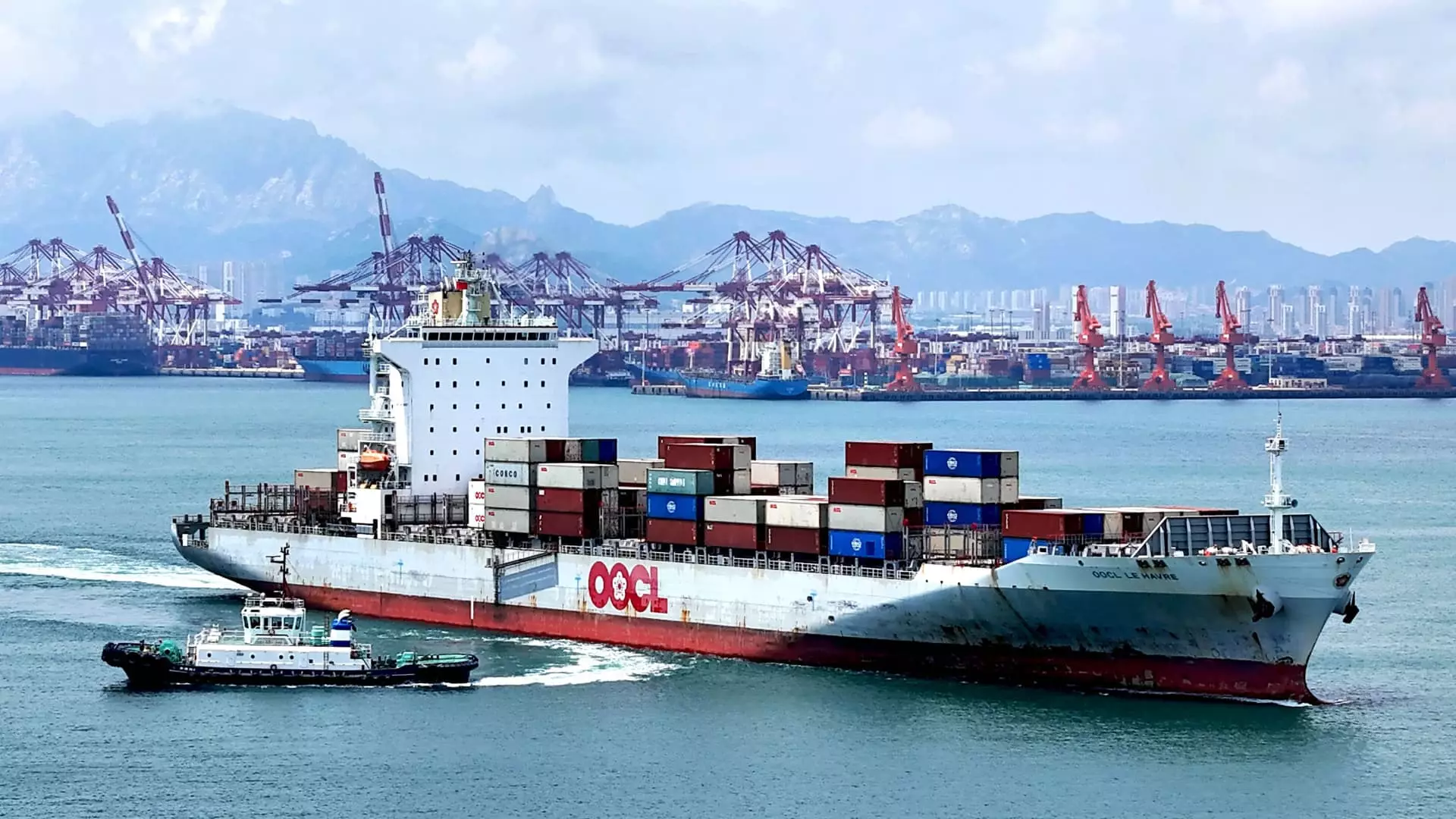China’s economic landscape has recently been under scrutiny as trade data for November has painted an alarming picture. With both exports and imports falling short of market forecasts, this data raises significant concerns regarding the resilience of the Chinese economy amidst sluggish consumer demand and persistent tariff threats. The following analysis aims to dissect the trade figures, their implications, and the potential path ahead for China’s economic engine.
The latest figures from China’s customs authority reveal a perplexing environment for international trade. Imports saw a notable decline of 3.9%, a stark contrast to the modest growth analysts had anticipated at 0.3%. This represents the steepest drop since September 2023, highlighting a weakening appetite for foreign goods among Chinese consumers and industries. On the export front, while there was nominal growth of 6.7% compared to the previous year, this was a significant decrease from the 12.7% growth reported in October. Expectations set by analysts were also not met, as a consensus forecast had predicted an increase of at least 8.5% for November.
The mixed signals from these numbers underscore the challenges that China faces: on one hand, exports are still growing, albeit at a slower pace; on the other hand, a downturn in imports suggests a troubling trend in domestic demand. This is particularly concerning as external factors may not bode well for recovery, especially with ongoing trade tensions influencing market confidence.
Diving deeper into specific sectors, China’s overall trade health appears uneven. Notably, exports to ASEAN nations shot up nearly 15%, while exports to the U.S. and the European Union saw increases of 8% and 7.2%, respectively. Yet, contrasting this positivity is the decline in imports from these very regions; particularly striking is the over 11% decrease in imports from the U.S. This dichotomy raises questions about the sustainability of export gains amid broader economic slowdowns.
Furthermore, the steel sector has emerged as a significant bright spot, with exports surging by 16%, pushing past the 9 million ton mark. This indicates robust international demand, especially as global construction and manufacturing sectors gradually recover. However, the challenge remains: how long can these export-driven gains sustain themselves against the backdrop of escalating tariff threats that may limit growth towards the middle of next year?
The looming presence of tariffs, particularly from the U.S., casts a shadow over future trade relations. While some analysts suggest that these tariffs may only affect volume in the longer term, any immediate surge in orders from U.S. companies looking to stock up could offer a temporary reprieve. As pointed out by economists, this could lead to a short-term spike in exports before potential downturns as tariffs take full effect.
China’s leadership has responded to these challenges with promises of “unconventional counter-cyclical adjustments” that aim to spur domestic demand through increased monetary and fiscal initiatives. This suggests a recognition of the necessity to bolster internal consumption while navigating the pressures of international trade barriers. However, with consumer inflation at a five-month low and demand remaining soft, the effectiveness of these measures remains to be seen.
Looking forward, the Chinese economy faces a crossroads, balancing external pressures with internal needs. While there is potential for a rebound in export growth, fueled by U.S. businesses front-loading their orders, analysts like Erica Tay warn of a probable slowdown in the latter half of 2024 as tariffs impact trade dynamics. Moreover, the current manufacturing expansion, reflected in a Purchasing Managers’ Index of 50.3 in November, may not be sufficient to safeguard against dwindling consumer demand.
While China’s trade performance in November holds some encouraging components, the overall picture is one of caution. The interplay between tariffs, domestic demand, and external market conditions will likely create a challenging environment for the economy moving forward. Stakeholders must stay vigilant as these dynamics unfold, strategizing for both short-term successes and long-term sustainability in a precarious global trade landscape. The effectiveness of government policies in stimulating domestic consumption will ultimately be pivotal in navigating the uncertainties ahead.

